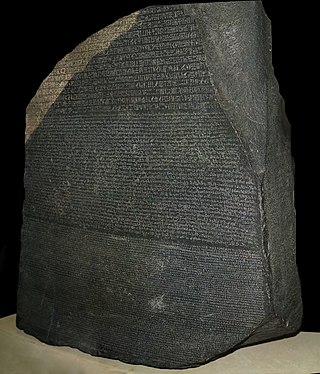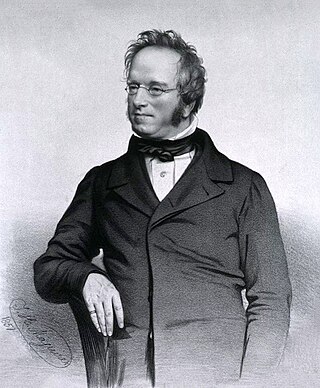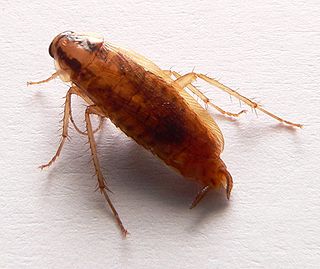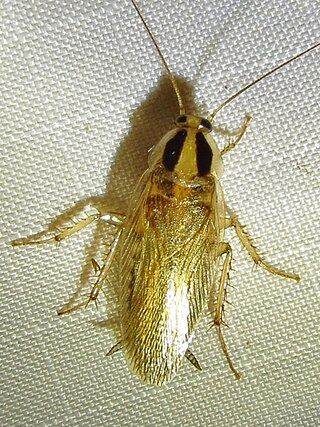
The British Museum is a public museum dedicated to human history, art and culture located in the Bloomsbury area of London. Its permanent collection of eight million works is the largest in the world. It documents the story of human culture from its beginnings to the present. The British Museum was the first public national museum to cover all fields of knowledge.

The Rosetta Stone is a stele of granodiorite inscribed with three versions of a decree issued in 196 BC during the Ptolemaic dynasty of Egypt, on behalf of King Ptolemy V Epiphanes. The top and middle texts are in Ancient Egyptian using hieroglyphic and Demotic scripts, respectively, while the bottom is in Ancient Greek. The decree has only minor differences across the three versions, making the Rosetta Stone key to deciphering the Egyptian scripts.

The Elgin Marbles are a collection of Ancient Greek sculptures from the Parthenon and other structures from the Acropolis of Athens, removed from Ottoman Greece and shipped to Britain by agents of Thomas Bruce, 7th Earl of Elgin, and now held in the British Museum in London. The majority of the sculptures were created in the 5th century BC under the direction of sculptor and architect Phidias.

The Natural History Museum in London is a museum that exhibits a vast range of specimens from various segments of natural history. It is one of three major museums on Exhibition Road in South Kensington, the others being the Science Museum and the Victoria and Albert Museum. The Natural History Museum's main frontage, however, is on Cromwell Road.

John Edward Gray was a British zoologist. He was the elder brother of zoologist George Robert Gray and son of the pharmacologist and botanist Samuel Frederick Gray (1766–1828). The standard author abbreviation J.E.Gray is used to indicate this person as the author when citing a botanical name. The same is used for a zoological name.

Albert Karl Ludwig Gotthilf Günther, also Albert Charles Lewis Gotthilf Günther, was a German-born British zoologist, ichthyologist, and herpetologist. Günther is ranked the second-most productive reptile taxonomist with more than 340 reptile species described.

The German cockroach, colloquially known as the croton bug, is a species of small cockroach, typically about 1.1 to 1.6 cm long. In color it varies from tan to almost black, and it has two dark, roughly parallel, streaks on the pronotum running anteroposteriorly from behind the head to the base of the wings. Although B. germanica has wings, it can barely fly, although it may glide when disturbed. Of the few species of cockroach that are domestic pests, it probably is the most widely troublesome example. It is very closely related to the Asian cockroach, and to the casual observer, the two appear nearly identical and may be mistaken for each other.

Ectobiidae is a family of the order Blattodea (cockroaches). This family contains many of the smaller common household pest cockroaches, among others. They are sometimes called wood cockroaches. A few notable species include:

Blattella asahinai, the Asian cockroach, is a species of cockroach that was first described in 1981 from insects collected on Okinawa Island, Japan. It is a small species of cockroach, typically 1.3 to 1.6 centimetres long and tan to dark brown in colour with dark parallel stripes on the back of their heads. It is commonly mistaken with the German cockroach for their similar appearance. It is commonly found in the United States in and around houses.

Francis Walker was an English entomologist. He was born in Southgate, London, on 31 July 1809 and died at Wanstead, England on 5 October 1874. He was one of the most prolific authors in entomology, and stirred controversy during his later life as his publications resulted in a huge number of junior synonyms. However, his assiduous work on the collections of the British Museum had great significance.
Waterbug or water bug can refer to any of several things:

Blattellaquinone, also known as gentisyl quinone isovalerate, is a sex pheromone of the German cockroach. Blattellaquinone is secreted by females to attract male cockroaches.

Blattellinae is a subfamily of the wood cockroach family, Ectobiidae. It includes the global household pest Blattella germanica, the German cockroach, and a number of endangered species. It contains about 70 genera.

Blattella is a genus of cosmopolitan and wild cockroaches in the family Ectobiidae.

Blattella vaga, the field cockroach, is a species of cockroach in the family Ectobiidae. It is found in Europe and Northern Asia, Central America, North America, and Southern Asia.

Nephridiophaga is a genus of single cell eukaryotes, now considered to be fungi, that pathogenically inhabit the Malpighian tubules of insects. Ivanic described the type species from honey bees.














